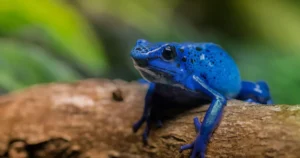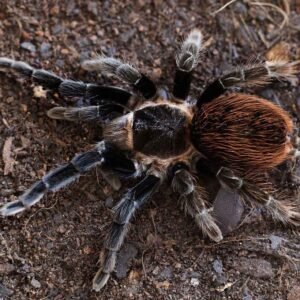Introduction
Axolotls, scientifically known as Ambystoma mexicanum, are unique amphibians native to Mexico, particularly the ancient lake system of Xochimilco near Mexico City. Known for their ability to regenerate limbs and their “smiling” appearance, axolotls are popular in the pet trade and scientific research. This guide covers everything you need to know about caring for these fascinating creatures.
Natural Habitat
Axolotls are found in high-altitude lakes, primarily in the Xochimilco lake system. These lakes and canals provide a perfect environment with plenty of small waterways and vegetation for cover. Unfortunately, urbanization and pollution have severely reduced their natural habitat, making axolotls critically endangered in the wild.
Physical Characteristics
Axolotls exhibit neoteny, meaning they retain juvenile characteristics throughout their adult life, such as external gills. They come in various colors, including wild type (brown with gold specks), leucistic (white with pink gills), and albino. Males are generally slimmer with longer tails, while females have rounder bodies filled with eggs during the breeding season.
Behavior and Lifestyle
Axolotls are primarily nocturnal but can adapt to being active during the day in captivity. They are solitary creatures and interact mainly during the breeding season. Axolotls use chemical signals and physical contact to communicate, especially when competing for territory or food. They are opportunistic feeders, snapping up prey that comes close using a suction feeding method.
Feeding Habits
Axolotls are carnivorous and enjoy a diet of worms, insects, small fish, and brine shrimp. Juvenile axolotls should be fed daily, while adults eat 2-3 times a week. It’s important to avoid feeding them wild-caught prey to prevent disease and ensure the food is appropriately sized to avoid choking.
Human Interaction and Handling
Although axolotls are generally not aggressive, handling them should be minimized to reduce stress. When introducing a new axolotl to its tank, it’s crucial to acclimate it slowly to avoid shock. Float the sealed bag in the tank water for about 15-20 minutes to equalize the temperature, then gradually add tank water to the bag before releasing the axolotl.
Conditions for Keeping Axolotls at Home
Axolotls require a spacious tank, with at least a 20-gallon capacity for one adult. The water temperature should be kept between 16-18°C (60-64°F), and the pH level should be between 7.4 and 7.6. Use a water conditioner to neutralize chemicals in tap water, and a slow-rate filter to maintain water quality without creating strong currents.
Tank Setup
An ideal tank setup includes hiding places (ceramic objects or caves), smooth rocks, driftwood, and sturdy plants. Avoid sharp objects to prevent injuries. A water chiller may be necessary to maintain the correct temperature, and regular water changes (about 20% weekly) are crucial.
Feeding and Water
Feed axolotls a diet rich in worms, brine shrimp, and small fish. Juveniles need daily feeding, while adults eat 2-3 times a week. Ensure the food is fresh and appropriate in size to prevent health issues. Maintain water quality with regular partial water changes and proper filtration.
Maintenance and Cleaning
Clean the tank regularly to prevent the buildup of waste and harmful chemicals. Use a siphon to remove debris and replace about 20% of the water weekly if using a filter, more frequently if not. Regularly test water parameters to ensure a healthy environment.
Reproduction and Life Cycle
Axolotls reach sexual maturity at about 12-18 months. During breeding, males deposit spermatophores which females pick up to fertilize their eggs internally. Females can lay hundreds of eggs, attaching them to vegetation or other objects. The young axolotls hatch after about 2 weeks and look like miniature adults with external gills.
Care for Juveniles
Juvenile axolotls require careful attention. They should be fed more frequently than adults, usually daily, with appropriately sized food. Ensure the water quality is optimal to support their growth and development.
Common Health Issues and Solutions
Axolotls can suffer from stress, injuries, and infections. Signs of stress include loss of appetite and inactivity. Injuries can occur from sharp objects or aggressive tank mates and require isolation and care. Regularly check for signs of illness and maintain a clean habitat to prevent health issues.
Fun Facts
- Incredible Regeneration: Axolotls can regrow entire limbs, spinal cord, heart, and other organs without scarring.
- Forever Young: They retain juvenile features throughout their lives due to a trait called neoteny.
- Unique Name: The name “axolotl” comes from the Nahuatl language of the Aztecs, meaning “water dog” or “water monster”.
Conclusion
Axolotls are fascinating creatures with unique characteristics and relatively simple care requirements, making them popular pets. By providing a suitable habitat, proper nutrition, and regular maintenance, you can ensure your axolotl thrives and lives a long, healthy life.
Deep Dive into Brachypelma Vagans
Want to know more about the Brachypelma Vagans and get expert tips on caring for this fascinating tarantula? Read our comprehensive guide The Ultimate Guide to Brachypelma Vagans to learn everything you need about maintaining and breeding this particular spider species.




